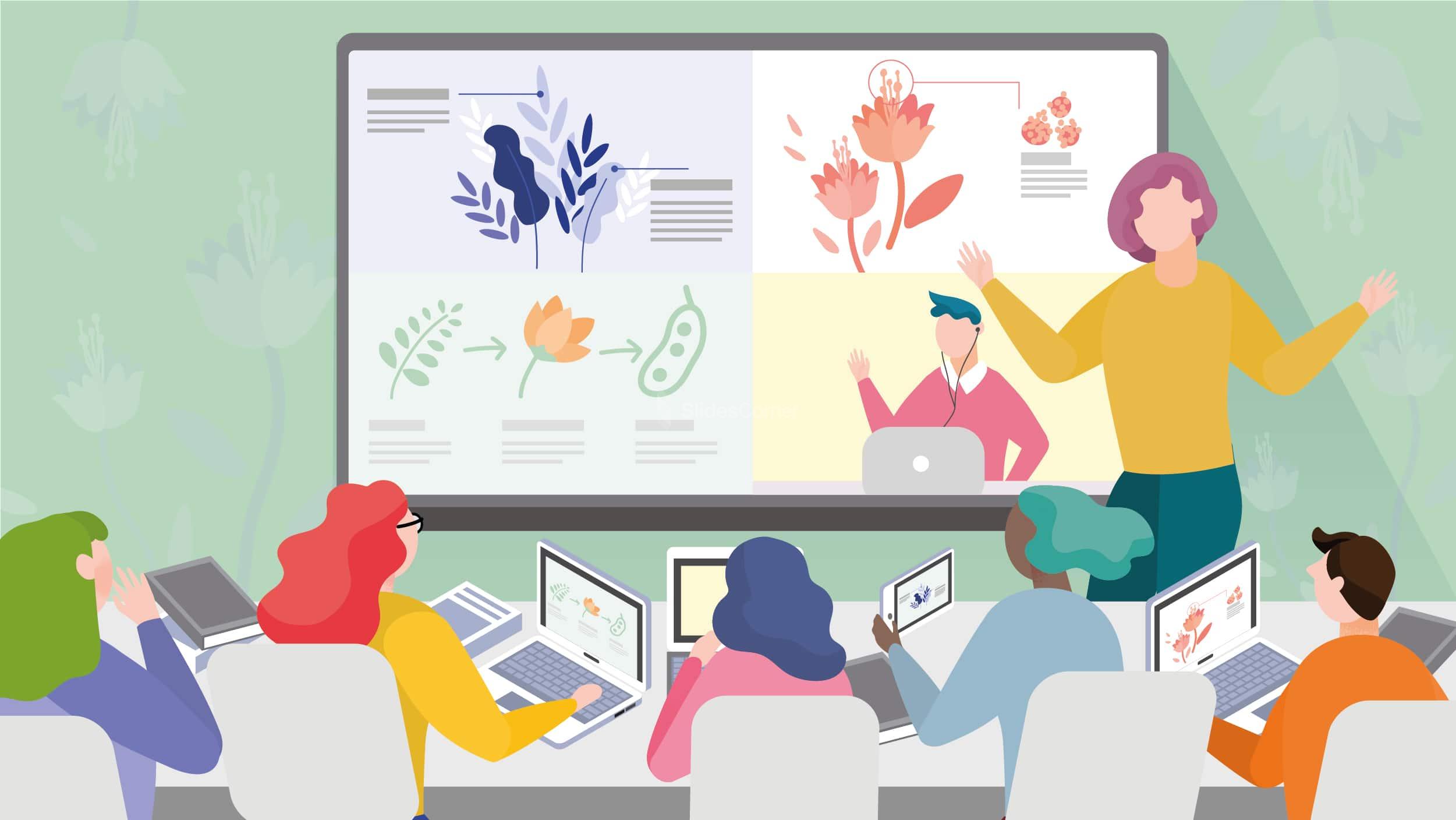Keeping your audience’s attention for long periods can be one of the biggest challenges whilst speaking in front of a crowd.
One of the best ways to get your audience to stay focused is to make them feel like they’re a part of your story.
Whether presenting to colleagues at work or giving the keynote at a major conference, slide presentations have become an absolutely essential way to share information.
There are a few simple things you can do to get your audience to participate in your presentation, by making it more interactive.
1. Break the ice
The perfect starting point is to ask a straightforward question that will warm up the audience.
Each of your audience members comes to your presentation in a completely different mood.
Turning your audience from listeners to active participants will help you to relax before you get into the main body of the presentation and deliver your most important points.
A simple ice-breaker can put everyone on the same level and energize them for your presentation.
There are fun icebreakers, silly icebreakers, as well as thought-provoking icebreakers.
Get your audience to do a simple exercise to reset their minds and refocus on your talk. By starting with an ice-breaker, you show your audience that your talk will be interactive and require their participation. For example, ask people to stand up and introduce themselves to their neighbors.
2. Use a simple presentation
Plan your presentation to be clean, easy to follow, and not overly complex. Keep all the essential details and allow the audience to ask about details during a question and answer session.
Remember that you do not have to say absolutely everything, only what is needed.
3. Break up complex information over multiple slides
Most people put too much information on their slides. Your slides should highlight or add context to what you’re saying. If you have a lot of information to share, don’t be afraid to spread it out over multiple slides. Your slides should have white space that allows your audience to focus on what’s important.
To properly structure your presentation, first you need to know its purpose. There are four common presentation purposes, though many presentations can be a combination of two.They are: To inform. To persuade. To inspire. To entertain.
Don’t fill your slides with walls of text. That almost guarantees a boring presentation. Sometimes that might be a few words or an image or two.
4. Tell stories
Stories are food for the brain when it comes to the presentations.
Storytelling is the interactive art of using words and actions to reveal the elements and images of a story while encouraging the listener’s imagination. Is the most universal way to captivate your audience’s attention, no matter where they are from or what they do for a living. People automatically tune in when you start telling your story because they want to know what happens next.
The storytelling listener’s role is to actively create the vivid, multi-sensory images, actions, characters, and events—the reality—of the story in his or her mind, based on the performance by the teller and on the listener’s own past experiences, beliefs, and understandings.
You can go further than dropping a few anecdotes into your speech. You’ll have the audience hanging on the edge of their seats, craving to hear the end of your story.
5. Use humour
Showing your personality and sense of humor can lighten the mood and build a good rapport with the crowd. The audience is more likely to remember you if you make them laugh and in turn remember your ideas and key points.

6. Add videos
Videos halfway through a presentation are an awesome tactic to refocus the audience. If you see your audience starting to get restless or fidgety, a video can instantly revive and get them interested again.
Videos help capture your audience’s attention and can help you pace your presentation.
Strategically, videos can help you emphasize points or provide a needed break from the monotony of listening to one presenter for an hour or more.
Videos are a great tool when it comes to giving an engaging presentation. Videos can evoke emotions in an audience that could be otherwise quite difficult to elicit.
Videos can be a way to start up a discussion, and reinforce your message, and more often than not, people are more moved and affected when they see a video.
Find the clip that will put your audience in the right mood and that reinforces your story.
7. Ask questions during your presentation
Audience’s attention drops to zero after just 10 minutes of your presentation. To get their attention back, try creating soft breaks within your speech. Therefore, take a break from your presentation from time to time and interact with your audience.
Ask for their questions and incorporate them already during the presentation. Many tools online allow audience members to ask questions anonymously, so even shy people can participate in the discussion.
Sometimes using too many digital question tools could be a bit too excessive, so a simple show of hands is an alternative to get everyone involved.
It may seem strange but using traditional methods, instead of digital platforms to revive a bored crowd is also easy and effective.
8. Use effective language
If you want your audience to understand your message, your language must be simple and clear. Use short words and short sentences. Do not use jargon, unless you are certain that your audience understands it. The language you use also needs to match the tone and style of the presentation. In general, talk about concrete facts rather than abstract ideas.
Using inspiring language and adjusting your tone of voice to your advantage can affect how you impact and influence the audience. So whether it is formal or informal, what the demographic of your audience is, it is important to make sure you don’t use too technical or not technical enough terms.
9. Use props
Using props to your advantage either to demonstrate or reinforce your point will make the presentation more interesting. Props are a great way how to help the audience to wire in another sense to absorb your message.
You don’t need to be giving a product demo to use props during your presentation. So bring props on the stage and show them during the right point to help the attendees visualize what you are describing verbally.
It is a different approach to the standard ‘lecturing’ presentation style where the audience is read with bullet points on the screen. It also allows them to visualize what you are talking about.
10. Poll the audience
Live polls are an incredibly effective tool for instantly engaging with your audience. Live polls help create mental breaks, so your audience can regain attention and stay focused throughout your presentation. Polls allow you to interact with your audience in real-time, which makes your presentation more inclusive and engaging.
11. Bet on interaction
To interact successfully with your audience, the presentation slides should be used in combination with some of the other tips mentioned in this article. This will help your audience to stay focussed, enable them to recall your main points and in turn allow you to deliver an effective, engaging presentation.









